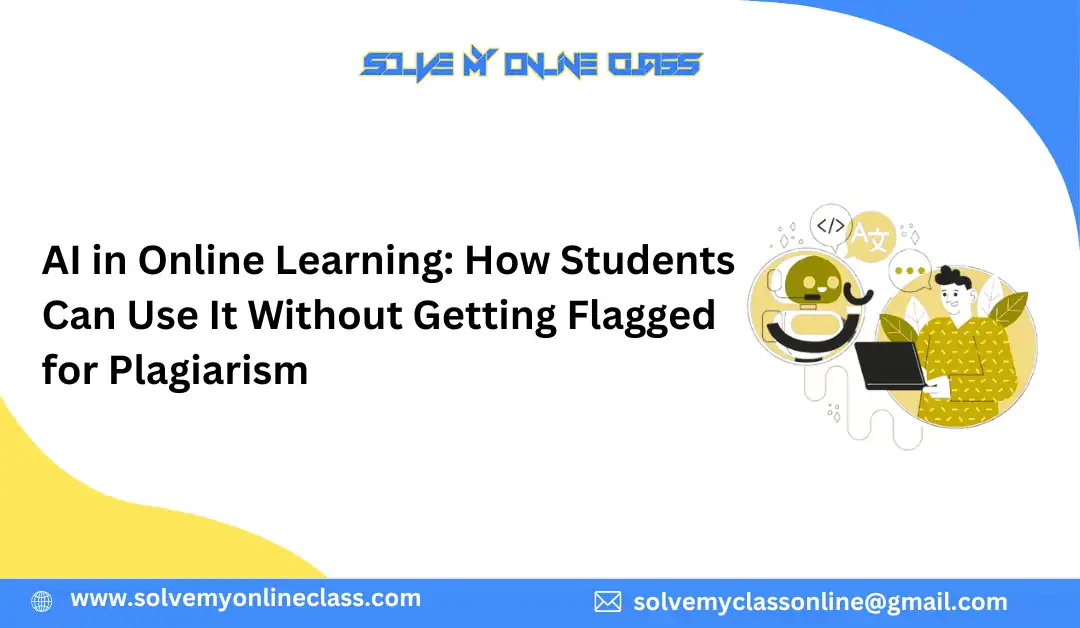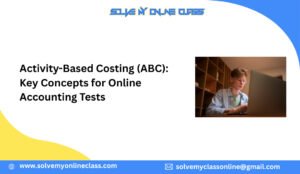Students never could have predicted how artificial intelligence (AI) would change education. AI techniques are improving the efficiency and personalization of online learning, from intelligent coaching programs to automatic essay comments. But plagiarism detection is the one thing that many students are concerned about. The worry of getting detected is real since institutions are adopting sophisticated plagiarism-checking technologies. Understanding how to use AI effectively and responsibly without sacrificing academic integrity is crucial.
This blog explores how AI can benefit students in online education while reducing their risk of plagiarism.
Understanding the Role of AI in Online Learning:
AI is a key factor in improving the experience of online learning, which has expanded quickly in recent years. Typical applications include:
- Intelligent Study Aids: AI systems create practice questions, condense chapters, and clarify difficult subjects.
- Time management: AI-powered apps assist students in setting reminders and making study plans.
- Platforms for adaptive learning modify teaching according to each student’s areas of strength and weakness.
- Language and Writing Support: Citation tools and AI grammar checkers improve academic writing.
When utilized properly, these tools enhance performance, save time, and lower stress.
The Plagiarism Dilemma:
Online learning plagiarism is a major problem. Turnitin, Copyscape, Grammarly Premium, and other plagiarism-detection tools are used by universities to detect copied or artificial intelligence-generated content. Students risk being penalized if they heedlessly rely on AI to produce essays or tasks.
The issue appears when:
- Text produced by AI is copied verbatim, unaltered.
- There are either missing or inaccurate citations.
- Concepts are inadequately and unoriginally paraphrased.
How can AI be used successfully, then, without running these risks? Let’s investigate.
Best Practices for Using AI Without Getting Flagged:
- Use AI for Guidance, Not Copy-Paste:
Consider AI as an instructor rather than a ghostwriter. Use AI to generate concepts, create outlines, or suggest structures, rather than copying a complete article. Write it again in your own words after that.
2. Edit and Add Your Voice:
Patterns in AI writing are frequently picked up by plagiarism detection algorithms. You can ensure your writing is original by revising, rewording, and incorporating your own thoughts.
3. Always Give Credit Where Credit Is Due:
Verify references again if AI provides them. Fake citations produced by certain software can damage your reputation. Make use of reliable scholarly sources and properly credit them.
- Integrate Research and AI:
While AI is excellent for summaries, it could be shallow. Use knowledge from lectures, academic publications, or textbooks to improve your work.
- Check for Plagiarism Before Sending in:
Use plagiarism detection software to review any work before turning it in. You can then determine if your assignment is secure.
Real-Life Applications of AI in Online Learning:
Here are some real-world examples of how students can use AI without plagiarizing:
- Writing an essay: Use AI to generate an outline, then use your own research to fill it in.
- Exams and Quizzes: AI practice questions and flashcards can improve your preparation.
- Help with homework: Grammar and paraphrasing tools enhance your writing without sacrificing creativity.
- Group Projects: AI tools facilitate efficient task distribution and idea generation.
When applied properly, AI can supplement student learning rather than replace it.
Academic Ethics: Why It Matters:
Universities stress creativity for a reason, even though it can be tempting to let AI do the labor-intensive tasks. Learning, not outsourcing, is the goal of education. Students risk losing their ability to think critically and solve problems if they rely too heavily on AI.
Nevertheless, AI can still be used, much like a calculator in math. How you use it makes a difference. Using AI responsibly enhances your understanding of the topic while also protecting you from plagiarism.
Can I Pay Someone To Take My Online Class For Me?
Overwhelmed students may eventually wonder, “Is it possible to pay someone to take my online class for me?” This idea typically comes up when it becomes impossible to balance employment, family, and education. Although this option is available, it is not equivalent to responsible AI use. Employing professionals to oversee a whole class goes against moral principles that colleges disapprove of.
Rather than putting you at risk for academic dishonesty, AI tools can help you better handle online classes by offering prompt summaries, reminders, and assignment support.
Take My Online Class For Me: The AI Alternative:
When deadlines loom, a lot of students look for Take my online class for me services. However, a safer option is provided by intelligent AI use. AI tools can replace outsourcing your entire class by:
- Create study schedules for each week’s classes.
- Make exam preparation flashcards.
- Assist you in comprehending challenging ideas.
- To improve assignments, offer writing assistance.
In this manner, you can still acquire the additional support you require while maintaining control over your educational path.
Hire Someone To Take My Online Class vs. Using AI:
Some students debate whether to rely on AI tools or hire someone to take my online course. Outsourcing carries significant dangers even though it might offer temporary relief:
- Ethical Concerns: Students who are detected outsourcing may be expelled from universities.
- Learning Loss: You miss out on the chance to develop essential skills.
- Financial Costs: Employing professionals can be costly.
Conversely, AI is affordable, secure, and accessible around the clock. You can get help without endangering your education if you know how to use AI correctly.
Balancing AI Use with Academic Integrity:
Students should adhere to this balance in order to optimize benefits:
- Research Manually First: Before utilizing AI, gather reliable data.
2. Use AI for Refinement: Request that AI enhance your writing’s clarity, grammar, or structure.
3. Professors respect creativity and critical analysis.
4. Remain Open: If permitted, disclose that you used artificial intelligence (AI) to help you study.
This ensures that your assignments remain original and free of plagiarism, while still utilizing AI support.
The Future of AI in Online Learning:
AI in education will only continue to progress. Future advancements could consist of:
- AI tutors that behave like actual instructors.
- Intelligent plagiarism detectors that identify variations in writing style in addition to duplicated text.
- Courses that are completely adaptive to the pace and learning preferences of each learner.
Students will be better prepared for the future academic environment if they learn to use AI effectively now.
Conclusion:
AI can be a great help in online learning, but only if it is applied properly. Learning should be complemented by it rather than replaced by human labor. Without being penalized for plagiarism, students can improve their performance by utilizing AI tools for practice, time management, editing, and ideation.
Although you may wonder if you can hire someone to take your online class or pay someone to do it for you, consider that artificial intelligence (AI) offers a more secure, moral, and economical alternative. When AI is used responsibly, it guarantees that students not only complete their courses but also genuinely learn and develop.






